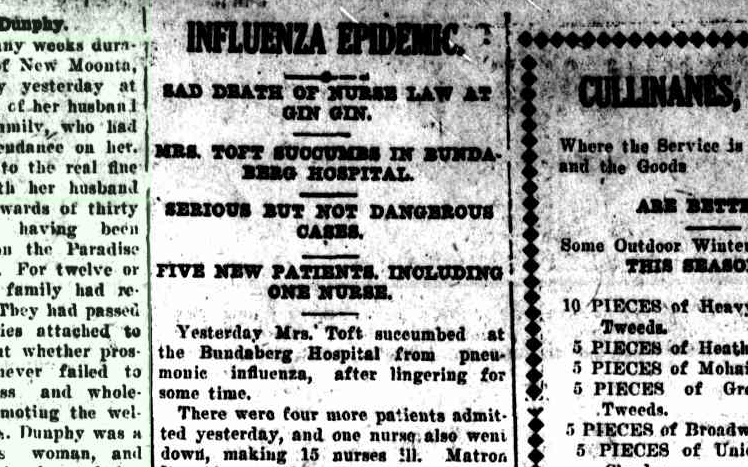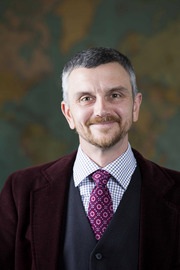
While flu season strikes again in the Bundaberg Region, 100 years ago in 1919 the deadliest pandemic to ever hit Australia claimed thousands of lives.
Fresh from the most terrible war the world had ever seen, the “Spanish flu” killed more people in a tragic year that should have been one of recovery and celebration.
The Bundaberg Mail reported on 30 May 1919 that due to “the ravages of influenza” several of its “run boys” had not turned up and paper deliveries were delayed.
The Mail also reported the death of Mrs Toft at the Bundaberg Hospital from pneumonic influenza, after lingering for some time.

“There were four more patients admitted yesterday, and one nurse also went down, making 15 nurses ill,” the newspaper reported.
“Matron Donaldson informed us last evening that there were three or four serious cases in the hospital, though they could not be termed dangerous.
“The Matron has the assistance of nine voluntary helpers, whose assistance is of great value and the number will be increased to 10 today.
“Enquiries yesterday round town showed little alteration in regard to the position generally.
“Dr Schmidt contlnues to progress towards recovery. Drs Ewing Thomson and Beaman are experiencing a very busy time.”
Mrs Toft was aged 33 and she had five small children, aged from 10 months to nine years.
The University of Sydney has asked why we don't commemorate victims and heroes?
“The pandemic that killed between 50-100 million people worldwide, made landfall in Australia by 1919,” the university notes.
“About a third of all Australians were infected and nearly 15,000 people were dead in under a year, yet little is known of its generational impact.”
Dr Peter Hobbins writes the casualties in 1919 matched the average annual death rate for the Australian Imperial Force throughout 1914-18.

“Arguably, we could consider 1919 as another year of war, albeit against a new enemy. Indeed, the typical victims had similar profiles: fit, young adults aged 20-40,” Dr Hobbins writes.
Patients’ lungs filled with fluid – which is why it became known as ‘pneumonic influenza’ – and they struggled to breathe. For nurses and doctors, a tell-tale sign of impending death was a blue, plum or mahogany colour in the victim’s cheeks.
“Responses within Australia varied from state to state but the crisis often led to the closure of schools, churches, theatres, pubs, race meetings and agricultural shows, plus the delay of victory celebrations,” according to Dr Hobbins.
“The result was not only economic hardship, but significant interruptions in education, entertainment, travel, shopping and worship.
“The funeral business boomed, however, as the nation’s annual death rate went up by approximately 25 per cent.”
Despite the disruption, fear and substantial personal risk posed by the flu, tens of thousands of ordinary Australians rose to the challenge.
The wartime spirit of volunteering and community service saw church groups, civic leaders, council workers, teachers, nurses and organisations such as the Red Cross step up.
They staffed relief depots and emergency hospitals, delivered comforts from pyjamas to soup, and cared for victims who were critically ill or convalescent.
A substantial proportion of these courageous carers were women, at a time when many were being commanded to hand back their wartime jobs to returning servicemen.
Should we commemorate 1919 flu pandemic?
In Bundaberg, the St George Society called on citizens to help.
Canon Beasley said it would be principally women's work but men could assist.
He said he knew of houses where every person was ill in bed.
The same edition of the Bundaberg Mail reported the death of Miss Law who kept a nursing home in Gin Gin.
She had been caring for her invalid parents while her brothers were on active service.
What do you think … should we commemorate the victims and heroes of the 1919 flu pandemic?
- Dr Peter Hobbins is in the Department of History, School of Philosophical and Historical Inquiry. This piece was first published in The Conversation.
- More local history







